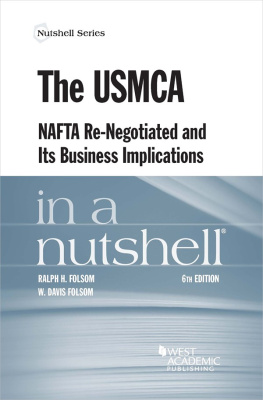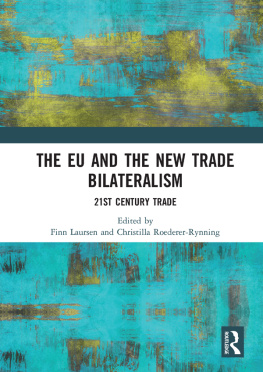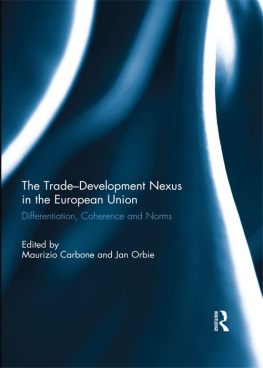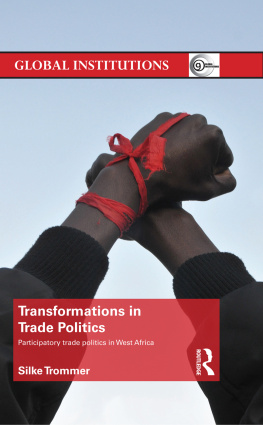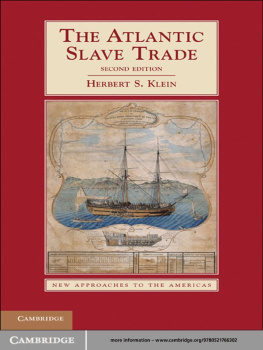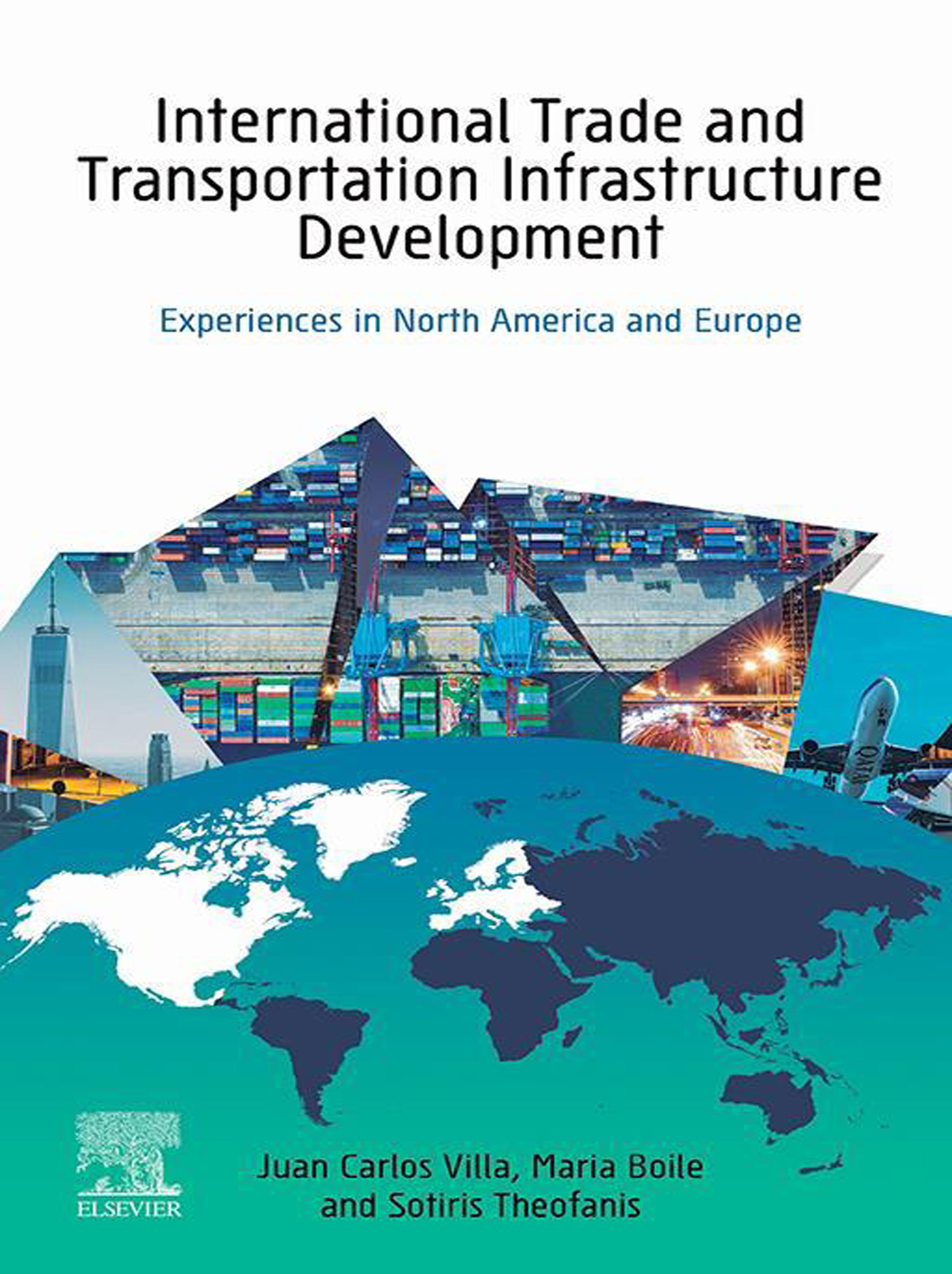Table of Contents
List of tables
- Tables in Chapter 1
- Tables in Chapter 2
- Tables in Chapter 3
- Tables in Chapter 4
- Tables in Chapter 5
- Tables in Chapter 6
List of illustrations
- Figures in Chapter 1
- Figures in Chapter 2
- Figures in Chapter 3
- Figures in Chapter 4
- Figures in Chapter 5
- Figures in Chapter 6
- Figures in Chapter 7
Landmarks
Table of Contents
International Trade and Transportation Infrastructure Development: Experiences in North America and Europe
Juan Carlos Villa
Research Scientist and Manager Latin America, Texas A&M Transportation Institute (TTI), Mexico City, Mexico
Maria Boile
Professor, Department of Maritime Studies, University of Piraeus
Director of Research, Hellenic Institute of Transport, Greece
Senior Research Scientist, CAIT, Rutgers University, NJ, United States
Sotiris Theofanis
Chairman and Managing Director of ThPA SA, Port of Thessaloniki, Greece
Senior Research Scientist, CAIT, Rutgers University, NJ, United States

Copyright
Elsevier
Radarweg 29, PO Box 211, 1000 AE Amsterdam, Netherlands
The Boulevard, Langford Lane, Kidlington, Oxford OX5 1GB, United Kingdom
50 Hampshire Street, 5th Floor, Cambridge, MA 02139, United States
Copyright 2020 Elsevier Inc. All rights reserved.
No part of this publication may be reproduced or transmitted in any form or by any means, electronic or mechanical, including photocopying, recording, or any information storage and retrieval system, without permission in writing from the publisher. Details on how to seek permission, further information about the Publishers permissions policies and our arrangements with organizations such as the Copyright Clearance Center and the Copyright Licensing Agency, can be found at our website: www.elsevier.com/permissions.
This book and the individual contributions contained in it are protected under copyright by the Publisher (other than as may be noted herein).
Notices
Knowledge and best practice in this field are constantly changing. As new research and experience broaden our understanding, changes in research methods, professional practices, or medical treatment may become necessary.
Practitioners and researchers must always rely on their own experience and knowledge in evaluating and using any information, methods, compounds, or experiments described herein. In using such information or methods they should be mindful of their own safety and the safety of others, including parties for whom they have a professional responsibility.
To the fullest extent of the law, neither the Publisher nor the authors, contributors, or editors, assume any liability for any injury and/or damage to persons or property as a matter of products liability, negligence or otherwise, or from any use or operation of any methods, products, instructions, or ideas contained in the material herein.
British Library Cataloguing-in-Publication Data
A catalogue record for this book is available from the British Library
Library of Congress Cataloging-in-Publication Data
A catalog record for this book is available from the Library of Congress
ISBN: 978-0-12-815741-1
For Information on all Elsevier publications visit our website at https://www.elsevier.com/books-and-journals
Publisher: Joe Hayton
Acquisitions Editor: Brian Romer
Editorial Project Manager: Michelle Fisher
Production Project Manager: Sujatha Thirugnana Sambandam
Cover Designer: Greg Harris
Typeset by MPS Limited, Chennai, India

Preface
International trade tripled in the two decades between 1990 and 2010. This expansion is the result of sustained economic growth, as well as a strong increase in economic interdependence among countries, particularly in two trading blocs: North America and the European Union. Consequentially, world trade increased much faster than the transportation infrastructures that handle merchandise trade. Analyzing international trade flows in North America and the European Union, and the related development of transportation infrastructure, I realized that there was no single source of information that has documented how transportation infrastructure is planned, funded, built, and maintained in the three North American countries. This led me to the idea of writing this book with my experience in North America and I invited my colleagues, Maria Boile and Sotiris Theofanis, to enrich the content with European experience. This book also analyzes how supply chains have been evolving to serve trade demand and make better use of existing transportation infrastructure and international regulations.
When I started writing this book, I thought it would be a relatively easy task, given my more than 35 years of experience in the North American transportation sector, having worked in various transportation modes: roadways, rail, maritime, and land ports, as well as in various disciplines including planning, project development, technology implementation, infrastructure privatization, and trade and economic analyses. However, when I started analyzing the details of each topic it was overwhelming. The amount of information I processed and the pace of transformation triggered by recent trade wars, natural disasters, and major infrastructure changes, such as the expansion of the Panama Canal, became a larger task than anticipated.
I was able to conclude this work by defining a cut-off date for data analysis. However, recent events such as Brexit, the new NAFTA, or USMCA, and other events provide ample material for a continuation. I would not have been able to reach this point without the support of my family, particularly my lovely wife Carmen, who has stood by me not only through this endeavor, but also throughout our journey together, moving from country to country and multiple homes. This support has allowed me to participate in multiple transportation and trade-related projects that have contributed to this book. I would also like to thank all my friends and colleagues at the Texas A&M Transportation Institute for their support and the opportunity to share great work experiences that have helped in developing this book. Special thanks are given to Jose Manuel Ancona, who had the patience to work with me gathering and analyzing data, preparing charts and graphs for this book, and to Fernanda Villegas and Gary Amayo, who also helped in preparing charts and checking references. Thanks also to Arturo Becerra, my wifes colleague, who developed the book cover.
Juan Carlos Villa, January 2020
Global trade has been growing fast during the last several decades, and it is expected to continue to grow, despite the recent slowdown. International and regional advances like those relating to the United States and the European Union have been coupled with other global and regional initiatives, including the recently emerging Chinese Belt and Road Initiative (BRI). These developments have shaped the existing transportation infrastructure and are creating a need for further network development and new transportation services and operations.


